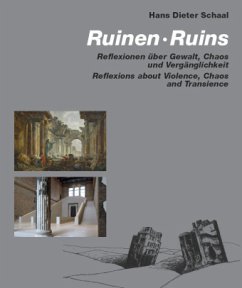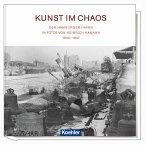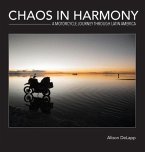Chaos and anarchy represent the opposite pole to an ordered life. Nothing works any more, everything is devastated, everything is falling apart. City walls, buildings that once afforded protection, have fallen victim to the excesses of armed conflict.Infernal threats, ambushes, fiery rain and other catastrophes were described even in the Bible. Pillaging and plunder were part of everyday life in the Middle Ages. Cruel deeds familiar from the Bible, or those described by other people or experienced personally, inspired painters in the transitional period from the Middle Ages to the Renaissance, and were picked out as a central theme in their pictures. In the 18th century it became fashionable to build artificial ruins in parks and landscape gardens. Ruins became an image of hu-man inadequacy in the attempt to come to terms with nature.The landscape painters of the time used ruin motifs in order to suggest the mysterious magic of pain, the sadness of beauty, to viewers. In the first half of the last century the world had to endure two wars that costs millions of people their lives and reduced many cities to rubble. Countless ruins remained. Few of them have survived. Overgrown with grass, ivy and Virginia creeper they now tower up out of the landscape like many others from various epochs - bearing witness to those who see them of the vanity of human endeavour, of transience, of death; filling them with horror, but at the same time exuding a feeling of gloom and sadness, of melancholy. In this book, the author delivers a detailed assessment of ruins as a phenomenon in architecture, landscape design, fine art, film and the media. The result is an extraordinarily intense contribu-tion to the theme of transience. Hans Dieter Schaal is a trained architect living in Attenweiler near Ulm and in Berlin. He works not only in his original profes-sion, but also as a garden architect, as an exhibition and stage designer and as a writer. His exhibition designs and stagesets are among the best of their kind in our days. Edition Axel Menges has already published several books written by Hans Dieter Schaal - Learning from Hollywood. Architecture and Film / Architektur und Film (1996 and 2010), Global Museum (2007) and Stadttagebücher (2010) as well as two books about his own work as an exhibition and stage designer - Hans Dieter Schaal. In-Between: Exhibition Architecture / Ausstellungsarchitektur (1999) and Hans Dieter Schaal. Stage Architecture / Bühnenarchitektur (2002).





